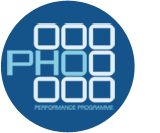In October, 2013, the first draft of the Integrated Performance and Incentive Framework (IPIF) was released. It has been developed for the Ministry of Health by the IPIF Expert Advisory Group.
In this article 
View / Download pdf version
of this article
A change in performance measurement

In October, 2013, the first draft of the Integrated Performance and Incentive Framework (IPIF) was released. It has
been developed for the Ministry of Health by the IPIF Expert Advisory Group. The IPIF represents a significant change
to the way that the performance of primary care, and the rest of the healthcare system, is monitored and incentivised.
Until the final document is released, it is difficult to say what the full impact will be for primary care, but it is
important to be aware of the Framework’s development.
The IPIF is a performance and quality improvement programme which will monitor a broad range of measures across the
whole of the New Zealand healthcare system. The aim of the IPIF is to encourage innovation and improvement within the
New Zealand healthcare system and implement the New Zealand adaptation of the Triple Aim goals (see: “What
is the Triple Aim?”).
The IPIF will address broad health and disability performance and quality measures. The framework will include system
level measures, which will consist of composite levels and will be organised according to the triple aim domains and life
stages ranging from early start to supportive end of life. There will be a menu of standardised contributory measures
that district alliances will select, that are meaningful for their districts and that show a logical link to the system
level measures.
What is the “Triple Aim”?
The Triple Aim is a healthcare improvement policy that was initially developed in the United States. It outlines a
plan for better healthcare systems by pursuing three aims: improving patients’ experience of care, improving the overall
health of a population and reducing the per-capita cost of health care.
In New Zealand the policy has been adapted by the Health Quality and Safety Commission and is one of the key tenants
of the IPIF. The three aims developed by the HQSC are:
- Improved quality, safety and experience of care
- Improved health and equity for all populations
- Best value for public health system resources
One of the expected outcomes from the IPIF is that the PHO Performance Programme (PPP) will be phased out. However,
it is likely that many of the current PPP indicators will also be indicators in the IPIF. The PPP continues to be in operation,
and primary care should still be working toward improving indicator performance. Funding for the PPP is currently unchanged
and can continue to be claimed.
One of the goals of the IPIF is to reduce the burden of reporting and other administrative tasks for practitioners.
This may be achieved through better use of IT and greater integration between higher-level services, such as PHOs with
DHBs and DHBs with the Ministry of Health.
It is expected that the IPIF will be fully integrated within practice management systems (PMS), similar to the PPP is
currently, prior to the Framework’s roll-out. The PMS can then be used to monitor individual indicators and track the
performance of a practice within the Framework.
It is anticipated that the IPIF will be finalised in early 2014, and will begin to be implemented from 1 July, 2014.
 Full documentation of the IPIF is available from:
www.hiirc.org.nz/page/42610
Full documentation of the IPIF is available from:
www.hiirc.org.nz/page/42610
For any questions or comments about the IPIF, contact Cathy O’Malley, Deputy Director General, Sector Capability and
Implementation, email: cathy_omalley@moh.govt.nz or Kate Charles, Director, Systems and Integration, email: kate_charles@moh.govt.nz
Update: For more information see
Integrated Performance and Incentive Framework (IPIF):
What has changed and how does it affect primary care? (BPJ62)